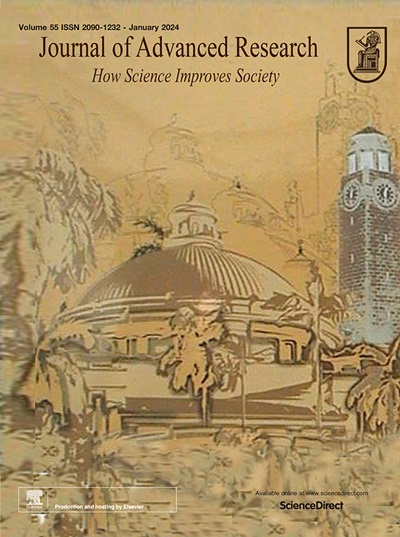Aroma compounds with enhanced sweet perception in tea infusions: Screening, characterization, and sweetening mechanism
IF 11.4
1区 综合性期刊
Q1 MULTIDISCIPLINARY SCIENCES
引用次数: 0
Abstract
Introduction
Tea (Camellia sinensis) is globally consumed for its pleasant flavor, with sweetness being a key factor in evaluating tea quality. While taste compounds contribute to this sweetness, aroma also plays a significant role, but its contribution is not well understood in tea infusion.Objectives
This study aimed to identify aroma compounds that enhance sweetness in tea infusion using a sensomics approach, and explore their synergistic effects through molecular docking.Results
The aroma increased the sweetness of the tea infusion by more than 24.0 %. Eighteen aroma-active compounds linked to sweetness were identified, among which (E)-β-damascenone (apple-like), linalool (citrus-like), geraniol (citrus-like), dimethyl sulfide (corn-like), (E,E)-2,4-heptadienal (floral), (E,Z)-2,6-nonadienal (cucumber-like), (E)-linalool oxide (furanoid) (floral), dihydroactinidiolide (fruity), γ-nonalactone (coconut-like), and (E)-β-ionone (floral) had higher sweetness similarity and significantly increased the sweet intensity of sucrose (p < 0.05). They likely enhance sweetness by reducing the binding energy of sucrose to sweet taste receptors, forming new hydrogen bonds and hydrophobic interactions.Conclusion
This study provides new insights into the role of aroma compounds in tea sweetness and suggests a potential mechanism for their sweetening effect. These compounds could be used as flavour enhancers or additives to improve the sweetness of tea beverages.

茶中具有增强甜味感知的香气化合物:筛选、表征和增甜机制
茶(Camellia sinensis)因其宜人的风味而受到全球消费,甜度是评估茶叶质量的关键因素。虽然味道化合物有助于这种甜味,但香气也起着重要作用,但它在茶浸泡中的作用尚未得到很好的理解。目的利用感体学方法,鉴定茶叶冲剂中增强甜味的香气化合物,并通过分子对接探讨其协同作用。结果该香气使茶泡茶的甜度提高24.0 %以上。共鉴定出18种与甜味相关的芳香活性化合物,其中(E)-β-damascenone(苹果状)、芳樟醇(柑橘状)、香叶醇(柑橘状)、二甲基硫化物(玉米状)、(E,E)-2,4-庚二烯醛(花状)、(E,Z)-2,6-壬二烯醛(黄瓜状)、(E)-芳樟醇氧化物(类呋喃烷)(花状)、二氢actinidiolide(果状)、γ-nonalactone(椰子状)和(E)-β-ionone(花状)具有较高的甜味相似性,显著提高了蔗糖的甜味强度(p <; 0.05)。它们可能通过降低蔗糖与甜味受体的结合能、形成新的氢键和疏水相互作用来增强甜味。结论本研究为研究香气化合物在茶叶甜味中的作用提供了新的思路,并提出了其增甜作用的可能机制。这些化合物可作为增味剂或添加剂,提高茶饮料的甜度。
本文章由计算机程序翻译,如有差异,请以英文原文为准。
求助全文
约1分钟内获得全文
求助全文
来源期刊

Journal of Advanced Research
Multidisciplinary-Multidisciplinary
CiteScore
21.60
自引率
0.90%
发文量
280
审稿时长
12 weeks
期刊介绍:
Journal of Advanced Research (J. Adv. Res.) is an applied/natural sciences, peer-reviewed journal that focuses on interdisciplinary research. The journal aims to contribute to applied research and knowledge worldwide through the publication of original and high-quality research articles in the fields of Medicine, Pharmaceutical Sciences, Dentistry, Physical Therapy, Veterinary Medicine, and Basic and Biological Sciences.
The following abstracting and indexing services cover the Journal of Advanced Research: PubMed/Medline, Essential Science Indicators, Web of Science, Scopus, PubMed Central, PubMed, Science Citation Index Expanded, Directory of Open Access Journals (DOAJ), and INSPEC.
 求助内容:
求助内容: 应助结果提醒方式:
应助结果提醒方式:


